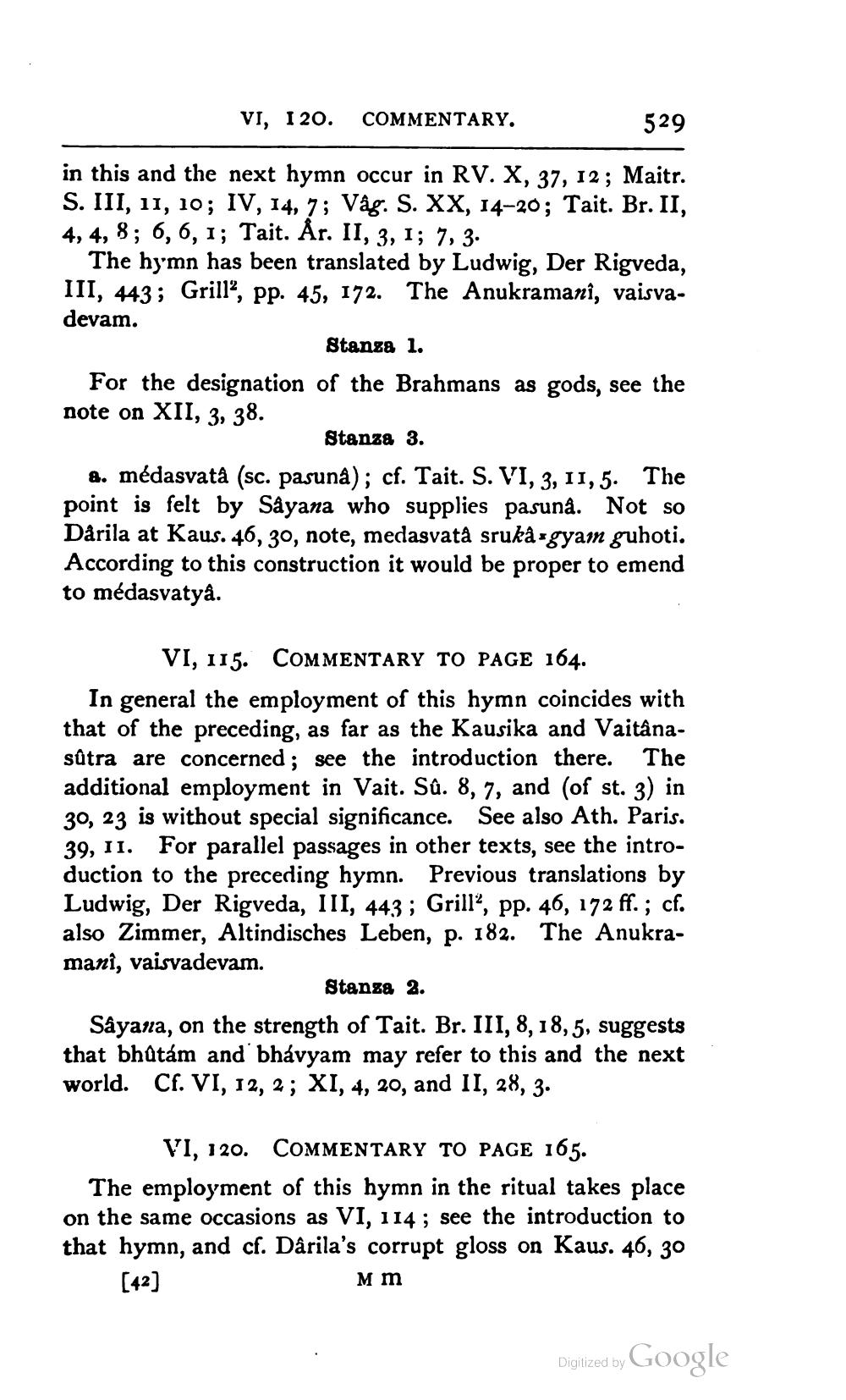________________
VI, 120. COMMENTARY.
529
in this and the next hymn occur in RV. X, 37, 12; Maitr. S. III, 11, 10; IV, 14, 7; Våg. S. XX, 14-20; Tait. Br. II, 4, 4, 8; 6, 6, 1; Tait. Ar. II, 3, 1; 7, 3.
The hymn has been translated by Ludwig, Der Rigveda, III, 443; Grill?, pp. 45, 172. The Anukramani, vaisvadevam.
Stanza 1. For the designation of the Brahmans as gods, see the note on XII, 3, 38.
Stanza 3. a. médasvata (sc. pasuna); cf. Tait. S. VI, 3, 11,5. The point is felt by Sảyana who supplies pasuna. Not so Dårila at Kaus. 46, 30, note, medasvatá sruka-gyam guhoti. According to this construction it would be proper to emend to médasvatyä.
VI, 115. COMMENTARY TO PAGE 164. In general the employment of this hymn coincides with that of the preceding, as far as the Kausika and Vaitânasútra are concerned; see the introduction there. The additional employment in Vait. Sû. 8, 7, and (of st. 3) in 30, 23 is without special significance. See also Ath. Paris. 39, 11. For parallel passages in other texts, see the introduction to the preceding hymn. Previous translations by Ludwig, Der Rigveda, III, 443; Grill?, pp. 46, 172 ff.; cf. also Zimmer, Altindisches Leben, p. 182. The Anukramani, vaisvadevam.
Stanza 2. Sayana, on the strength of Tait. Br. III, 8, 18,5, suggests that bhatám and bhavyam may refer to this and the next world. Cf. VI, 12, 2; XI, 4, 20, and II, 28, 3.
VI, 120. COMMENTARY TO PAGE 165. The employment of this hymn in the ritual takes place on the same occasions as VI, 114 ; see the introduction to that hymn, and cf. Dârila's corrupt gloss on Kaus. 46, 30 [42]
Mm
Digized by Google




